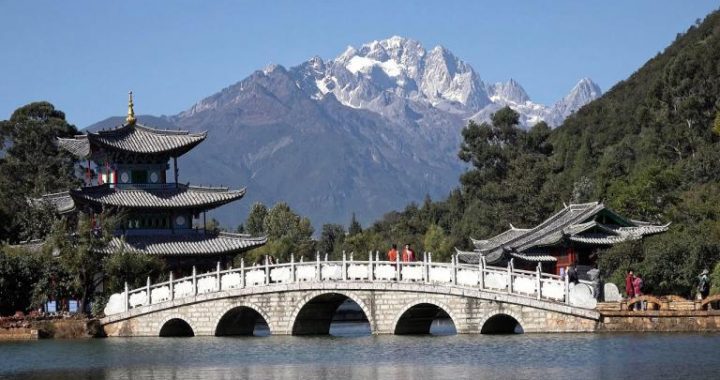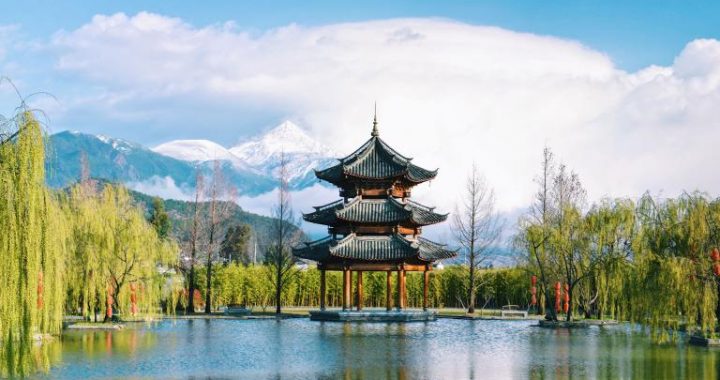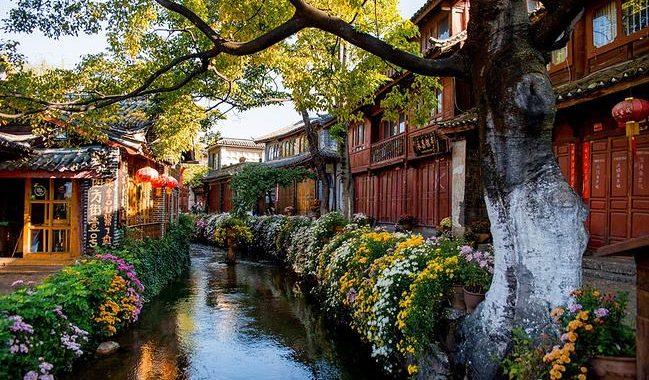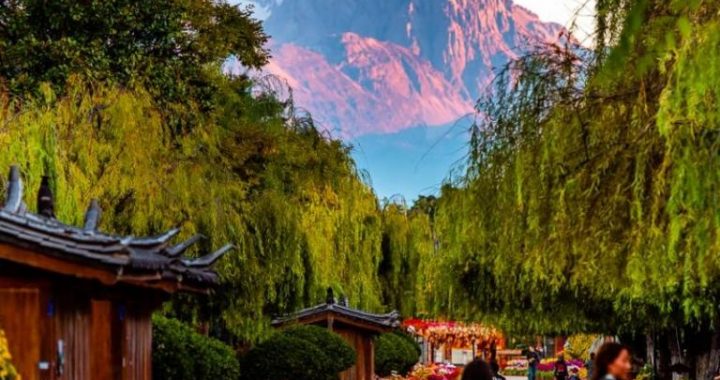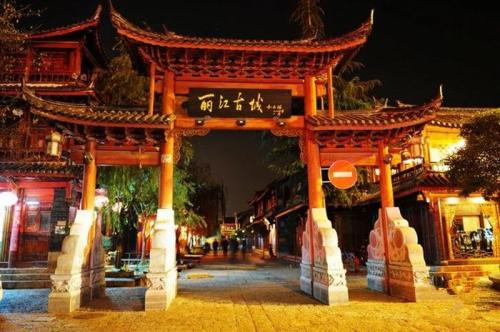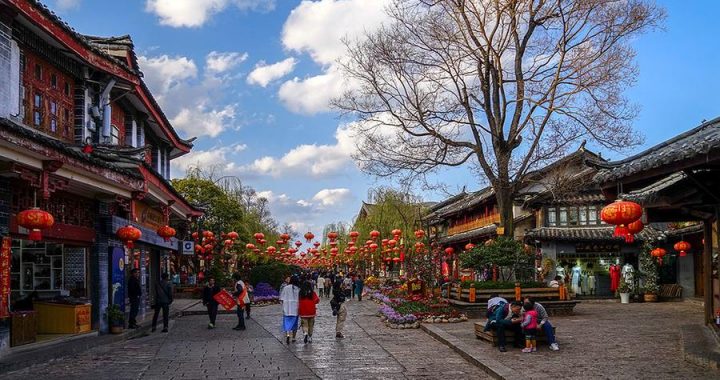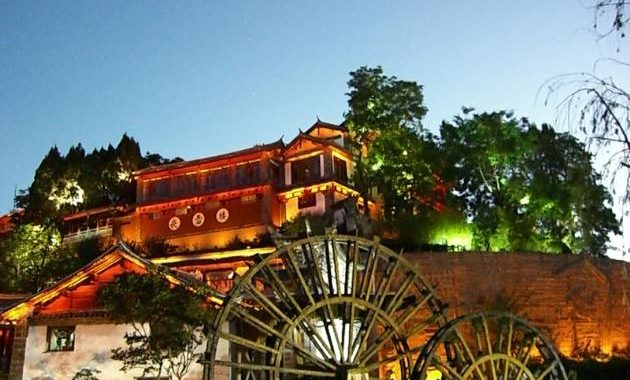Footloose In Around LIjiang
6 min readForget your Feilagamo shoes.Lijiang’s sights are best appreciated by strolling through the old Town.That could mean a whole day pottering through the enclaves of handicraft shops and back lanes and sampling steaming Lijiang cakes from a hot grill.Start off the day with a sumptuous breakfast at the hodgepodge of cafe along West Canal(xihe)and Xinhua Street(xinhua jie).
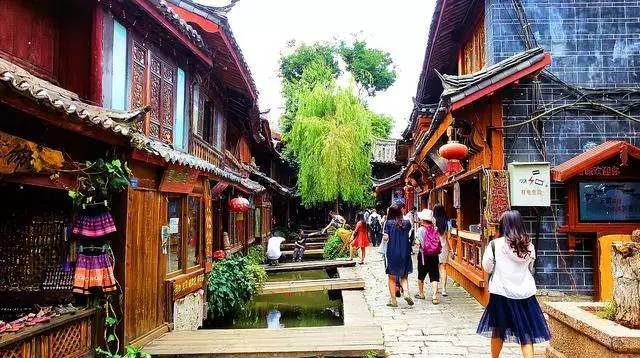
First thing you notice is the town gurgles with water.Everywhere,canals bubble with the crystal clear waters of Lashi Lake(lashihai)and Black Dragon Pool(heilong tan),located at the foot of Jade Dragon Snow Mountain.The locals practice a sensible three-part system to manage water use.Water is diverted from canals into three ponds.The uppermost pond supplies drinking water.The middle one is for rinsing vegetables and the last pond downstream is used for laundry.On either side of the canals,local children splash their feet in cool water and women rinse the morning laundry.All of which adds t the restful,homely atmosphere in Lijiang.
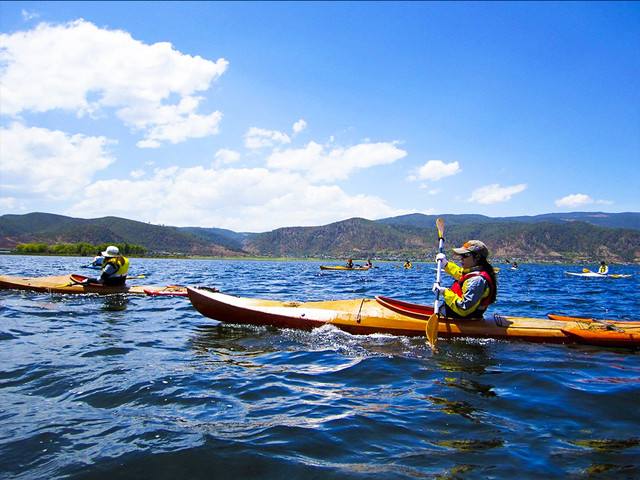
There are as many bridges as there are waterways.Over 350 bridges of stone or chestnut wood span the canals of Lijiang,creating a poetic and idyllic setting.One of the most scenic bridges is double-arched and found at the eastern end of Square Street.Built in the Ming dynasty,it’s known as the Bridge That Mirrors Snow(yingxue qiao)because its waters reflect the mystic peaks of Jade Dragon Snow Mountain.The largest stone bridge is 92 feet(28 m)long.Also built during the Ming dynasty,it was once the conduit for thevillage chief to travel from his Lijiang home to the nearby Buddhist grounds.Lion-head sculptures,one of which lost its head during the Cultural Revolution,adorn the stone railings.Each bridge has a story to tel1.Baisuifang Bridge(baisuifang qiao)was named after father and son centenarians who once lived in that lane,while a rich man who desired a son built Wanzi Bridge(wanzi qiao).
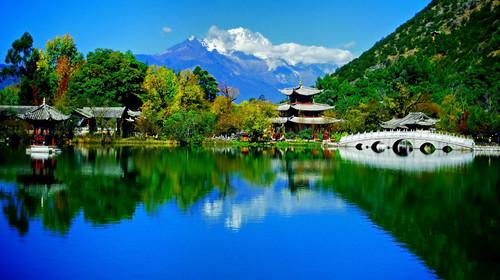
You will see lots more local women than men in the street.That is because Lijiang consists mostly of the Naxi tribe.In Naxi tradition,women are the pillars of Naxi family.life.They raise farm animals,brew wine,weave cloth and grind beans to make tofu and noodles.If they’re not on their way to the markets or running errands,local residents adore sitting by the bridge to chat,knit,play chess or baby-sit grandchildren.The traditionally live in matrilineal families-a system that survives particularly in the Yongning(yongning)area,north of Lijiang.Any children born of romantic liaisons belong to the woman,as does all property.
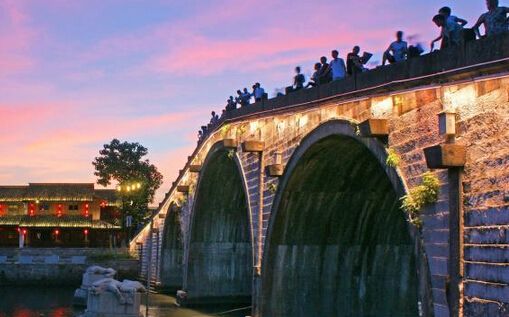
Buildings in Lijiang are a salve for eyes that have had enough of modern towns.
Architecture here is elegant and practical,yet blends with the surroundings will be happy to point out the Han,Bai and Tibetan influences visible in each building.
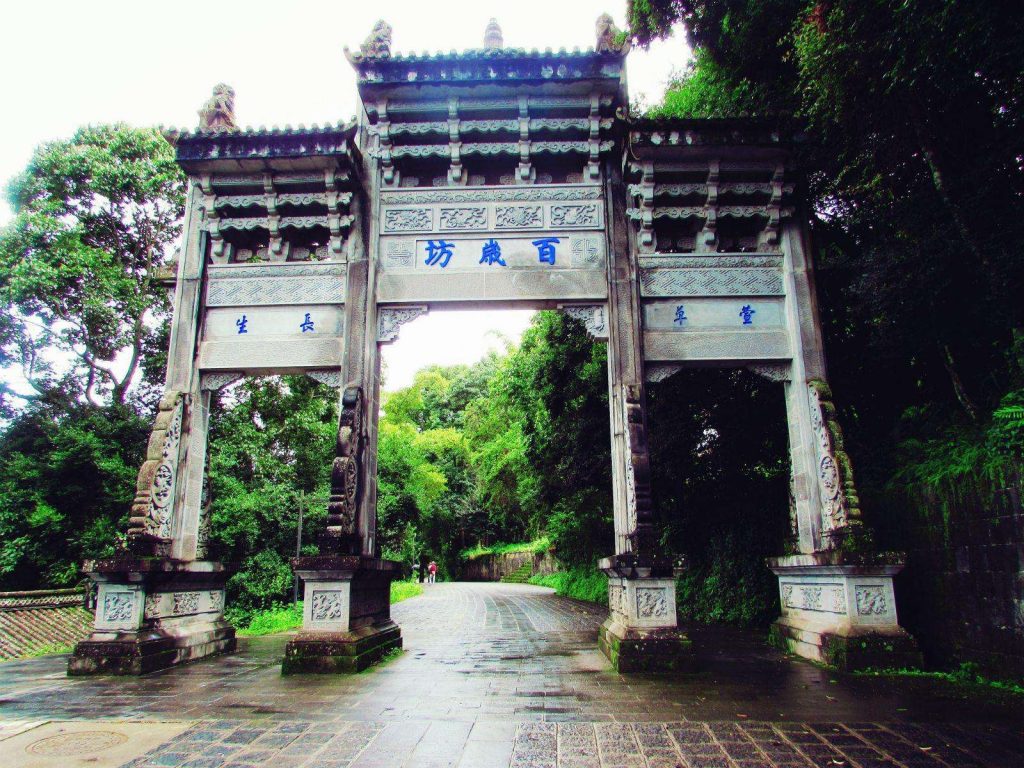
Each compound consists of three houses.A screen wall,painted with floral patterns or auspicious poems,completes the square.Ornately carved wooden windows and doors stand out against clean,plain walls.Long corridors link each house to the main courtyard,where families socialize in open-air comfort.
Buying a custom-made window frame,with its intricate designs carved from wood.
Watching wizened elderly ladies as they embroider patterns that later go onto their traditional dress.

Enjoying a mud-pie while watching the locals at their daily activities.
Peek past the main entrance of a residential home to catch a glimpse of the tasteful interiors.Homes are spacious and airy.Courtyards are landscaped with rocks and potted plants.The artistic decor reels with religious,cultural significance.If you spot a roof eave in a fish design,that’s Taoist for”Supreme Being.”Even the tiles on the ground are arranged to denote longevity,good fortune or peace.
Local homes sometimes double as workshops.During the harvest season,entrances are transformed into golden gateways as the women harvest yellow-colored millet,maize,melons and pumpkins.

Not only do locals have a close relationship with nature,but also with education.Naxi Chief Ahja Ahde was legendary for his love for learning and sophistication,as reflected in his beautiful abode.Famed as a cultural relic,his palatial compound holds Buddhist and Taoist halls,a meeting hall,a pavilion of the Jade Emperor,a family ancestral temple,as we11 as a library containing a complete collection of Buddhist teachings.
Streets in Lijiang are rich in history.May lst Street(wuyi jie),site of the famous over-270-year-old Snow Mountain Academy(xueshan shayuan),was frequented by scholars and politicians during the Qing dynasty.Naxis call this street“Gaoken,”meaning”Street of Private Schools.”The town’s first young scholar,who successfully passed the imperial examination,sponsored the three-story building beside Bean Market Bridge(wandou qiao).

A aodern advertisement using ancient lWasi pictographs.
At Xianwen Lane(xianwen xiang)on Guangyi Street stands a famous bookshop visited by dignitaries and learned men.Above its entrance reads an inscription made by the Naxi chieftian in the Ming dynasty,which reads“tianyu liufang,”meaning“Go to Read Books.”Galleries,arts and crafts shops also line the narrow lane.In the past,merchants from Dali rented houses along here,so the Naxis call Xianwen Lane“Jianlogo”(jianluoguo),meaning“Street of Dali.”
Mishi Lane(mishi xiang)on Xinyi Street(xinyi jie)has always been a lane of commerce.Tibetan merchants from Sichuan and Yunnan provinces used to stay here,but now tourists rest their tired feet in its many teahouses and cafe At night,hoveraround Square Street,a favorite Naxi venue for merrymaking,song and dance.Operas are staged here during festivals.But you can catch ancient Naxi tunes by the Dayan Naxi Ancient Music Troupe nightly at the Naxi Music Research Institute on East Street,just north of the market square.
Some of the any sourenirs that await visitors in Lijiang.
The musicians,some of whom seem as old as the ancient instruments they use,play a repertoire of ancient Taoist music dating back to the Han dynasty.This unique music has been long lost in the rest of China,but has been passed on through the generations in Lijiang.Using original instruments and playing authentic compositions,the musicians give you an opportunity to listen to history.

Several cultural and religious relics are found in Lijiang’s neighborhood.0nly 55 of Lijiang’s 200 famous murals,perfected by ethnic artists of Dongba,Tibetan lama and Han heritage,remain in the county.They are found in Great Treasure Palace(dabaoji gong),Dadingge Pavilion(dading ge),Dajue Palace(dajue gong)and the Colored Glaze Hall(liulidian)in Baisha Town.Above the 01d Town is the beautiful Lion Hill(shizi shan),from which you can enjoy views of the town coming to life in the mornings,or slowing down to rest at the end of the day.There’s also the unique pagoda Wan Gou Lou,which is worth a visit-it’s relatively new,but the spectacular workmanship and detailed carvings make it a wonder in its own right.
North of the town is Black Dragon Pool Park(heilongtangongyuan),where you find scrolls and artifacts at the Dongba Research Institute(dongba wen hua bowuguan).The park also has stunning views.Not far away is Wufeng Temple(wufeng lou).If you follow the winding trail upwards,you are headed for Elephant Hill(xiang shan).It takes about an hour to make your way up and back down again.Other monasteries around are the Puji,Fuguo,Yufeng and Wenbi Monasteries.If you have time,head for Tiger Leaping Gorge(hutiao xia)for some serious trekking and Lugu Lake(lugu hai)-cradle of the Yongning Mosuo tribe(yongning mosuoren buluo).
“It’s amazing that the locals have adapted so well to time,yet preserved so much of their culture.”
“These are people who have long roots and love their history.”
A visit to the Yulong Xue Shan(yulong xuishan),which means“jade dragon and snow mountain,”offers expansive mountains views and snowy scenery.Local travel guides offer tour packages,though they’re quite pricey.You can scale the 18,045 feet(5,500 m)mountain on your own without much trouble.There are two chairlifts-the first one goes up halfway the mountain,while the second,the highest chairlift in Asia,lifts you up to 14,783 feet(4,506 m).Don’t let the stunning views of glaciers and peaks distract you too much-be aware of signs of altitude sickness;symptoms include dizziness,headaches and a feeling of sluggishness.Hiring a van for about RMB 130 is the easiest way to get out to the mountain on your own.
